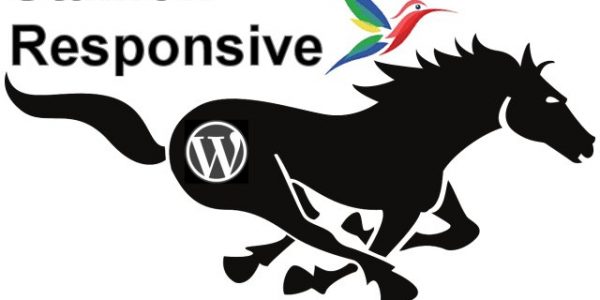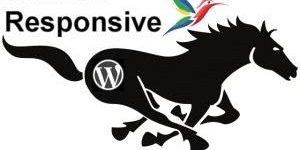Comment on Stallion Responsive WordPress SEO Theme by SEO Dave.

As you’ve touched on it’s a combination of making sure new content is indexed (recent articles), sharing link benefit through the site (categories) and giving extra attention to popular pages as determined by commenting (recent comments, most popular – which aren’t necessarily the most popular search engine traffic wise).
As you found Tags tend not to add much to a site traffic wise because users tend to use single keywords, I’m good at SEO but to get traffic to a single keyword Tag page like “Search” or “Google” or “SEO”… would be a MASSIVE SEO undertaking, it would take thousands of links to those Tags pages with a lot of PR/link benefit: not worth the effort, go for two plus keyword phrases,more traffic overall. Unless your Tags are really niche single keywords that doesn’t have a great deal of traffic they are highly unlikely to rank high (single keyword SERPs are HARD), this is true for any single keyword optimized page. If you Tag with multiple keyword phrases only (Tags named like “Google Search Engine Optimization”, for longer tail SERPs) they are more likely to gain traffic, but WordPress users tend to use multiple keyword phrases for Categories not Tags, so in my SEO strategy Tags are rarely used if I wanted an archive section (Tags and Categories output are pretty much identical) with a title “Google Search Engine Optimization” I’d create a Category called “Google Search Engine Optimization”. So the way most webmasters use Tags means they act as a way to pass link benefit through a site, but NOT generate search engine traffic directly and that doesn’t make a great deal of sense. I aim for multiple keyword categories that act as a way to pass link juice and have the potential to gain SERPs (can be long tail SERPs) in their own right.
Take into account I’ve done ZERO keywords research for your site, so specific advice is based on educated guesswork, with research I’d probably use different phrases.
Most of your categories aren’t very good SEO wise, of course they will pass the link benefit through the site, but the keyword usage is poor. Your “Beliefs” category should be at least “Amish Beliefs” or “Amish Religious Beliefs”, I’d assume the category currently generates little to no direct search engine traffic.
Your categories widget should look something like this:
Amish Religious Beliefs
Amish Books and Media
Amish Business Advice
Amish Communities
Amish Controversies
Amish Culture and Society
Amish History
Mennonite Groups
Change your Uncategorised cat to “Amish Something” or “Something Amish”. Do a little keyword research and find a two or three word phrase that covers what you put in that category. Don’t be concerned if all categories have the main keyword Amish within them, the site is about the Amish after all.
This will add relevant Amish keywords through out the site as anchor text which will help.
I noticed some of your articles titles are poorly optimized, it’s a common mistake. Your last post is titled “Confident horse”, that could mean anything while the post is about “American Amish Buggy Road Signs”.
A Google search for American Amish Buggy Road Signs has that post in the top 10 which gives you a good idea how Google views the posts content. Change the title and it’s likely to be number one for that long tail SERP.
My wife runs multiple sites and I had to keep reminding her about the titles she used, was going to give an example or two, but had to look through her latest 60 posts to find one from 5 months ago titled “Great Day Out” so she’s got it now: one bad title out of 60 isn’t bad. I’ll have to start calling her SEO Marie :-)
You’ll note your most commented posts have quite descriptive titles like “So you want to join the Amish”. That’s a great title for search engines and users.
Speaking of comments, remember you informed me about the Mysteryman Gravatars not working as expected, I fixed that in I think Stallion 6.1.
BTW there’s no such thing as over search engine optimized as long as the content doesn’t read like SPAM, don’t worry about keyword density, worry about how it reads. If it reads OK, it’s OK, I stop optimizing before it’s difficult to read (SEO keyword SPAM is hard to read).
Regarding the number of sitewide links this adds to a WordPress site you are right they won’t all be the best links for all posts, the anchor text of all links won’t match the SERPs the page is targeting: it’s why it’s a good idea to try to optimize every title (posts, pages, categories everything) so when content matches the anchor text helps. The perfect SEO’d page will ONLY have links from it using relevant anchor text, so if I wanted this post to rank for “WordPress Theme Designs” ideally all links would use one or more of those three keywords or similar derivatives (keywords like theme, design etc…) so links with anchor text “SEO Themes” helps this pages SERPs (uses themes), but links with anchor text “AdSense Optimization” doesn’t.
Most of your articles are Amish relevant, so if you add Amish and Amish relevant keywords to most posts, pages, categories…. titles it helps for lots of SERPs through out the site.
If we only add relevant links not only would that be a massive task to add the links manually, no way you are going to get that level of SEO in a CMS automated, but also it means guaranteeing all pages you want indexing will have a fair number of links will be an issue. Your current widget use guarantees all categories get a decent amount of link benefit which is shared over the posts within those categories. Remove the categories widget and some categories will gain a lot less link benefit and so will it’s posts.
It’s a balance between the SEO of the individual posts and spreading the link benefit through the site, no link benefit = no SERPs.
The recent articles widget is so new posts have links from all pages so when Google spiders the site there’s a very good chance it will quickly find, spider and index your newest content. For a site with lots of new content those links won’t last long, but without them you rely on Google spidering the home page or the categories the new posts are added to before you add more new posts. Since Google randomly follows links from the pages it visits if you only have two pages with links to the new posts (home and one category) there’s a good chance new posts could be missed for weeks before they are spidered. I suppose if your new posts aren’t time sensitive in anyway you could skip the recent articles widget.
The recent comments links are assuming your most recently commented posts might be popular and you want them spidered often to pick up the new comments and to pass more link benefit to them so they rank higher. I find on many sites the same posts are commented to over and over again so the links are practically permanent (good if they are high traffic from search engines, they tend to be). You want your most popular posts to be linked from more pages so they remain ranked high and go higher. A good idea is to look through your log files and Google analytics etc… to see which pages are generating most traffic and consider adding links manually, on a few sites I add links to popular posts and categories that aren’t making the widget areas into the Blogroll links list so they get a sitewide link. Always look after your highest traffic pages with more link juice :-)
What I’d like to do long term is find a way to add more customization to the widgets, as described above we need widgets like categories and recent articles sitewide, but the comment widget and the most popular posts widget (based on the comments) might be better with category wide settings. Would be good SEO wise to have those widgets to be categorized, visit category A and posts under category A and it shows commented posts under that category only. This would mean there’s a better chance the anchor text of the links will help the posts within the category (more likely to be relevant) AND the visitor might be more likely to visit a latest comment if it’s to a post in the same category (related content). On my long list of things to look at.
I note you are still using Stallion 6.0.1, you are missing some useful features. I forget when I added the Footer widget areas, I think Stallion 6.1. The five Footer widget areas are great for putting widgets you want for SEO reasons etc… but your visitors are less likely to use. This site isn’t the best example because I use it as a Stallion demo site and have added descriptions what the widgets are which take up more space (lot of extra text) also have the theme switcher links on the right menu which I only use on this site. My other WordPress SEO Themes site is a better example, you can see the footer widgets are used for the widgets I expect to be clicked less often or I want for SEO reasons (or to log in to the dashboard without having to remember the login URL :-)).
David


More Comments by SEO Dave
Stallion Responsive SEO Theme
Free Premium WordPress SEO Plugins, Maybe?
As you know when I do updates it tends to be everything and the kitchen sink added to Stallion Responsive, so you’ll be missing some major feature updates. Since 8.2.2 there’s been three updates and that’s a LOT of changes, …
Continue Reading Responsive WordPress SEO Package
Stallion Responsive SEO Theme
WP Rocket Caching Plugin : Enable Caching for Mobile Devices
Hey Eric, hope things are going well.
I’m not familiar with the WP Rocket Caching Plugin (premium product) mainly as I use W3 Total Cache.
I can’t think of anything obvious that would cause an issue, all the Stallion Responsive mobile responsive …
Continue Reading Responsive WordPress SEO Package
Stallion Responsive SEO Theme
PHP Error: Warning: POST Content-Length of bytes exceeds the limit of 8388608 bytes in Unknown on line 0
That’s not a WordPress child theme issue per se, it’s not even a WordPress issue per se it’s a PHP error warning due to a PHP setting being set a bit low.
What’s happening is your post_max_size (max upload size of …
Continue Reading Responsive WordPress SEO Package
Stallion Responsive SEO Theme
Adding a WordPress Optin Form Widget
Stallion Responsive includes 26 widget areas (plus an unlimited number you can make via a Stallion feature), there’s 5 widget areas related to the header area, several of them could be used to achieve what you want by adding a …
Continue Reading Responsive WordPress SEO Package
Stallion Responsive SEO Theme
Testing the Stallion Responsive SEO Theme
The Stallion Responsive license is unlimited domains you own, so yes one off $40 for your entire network. If you sell a site with Stallion on, you need to buy a separate license.
Stallion Responsive is a theme not a plugin, …
Continue Reading Responsive WordPress SEO Package
Stallion Responsive SEO Theme
Updating a WordPress Child Theme
On the sidebars issue, if it’s the Stallion SEO Posts widgets (the popular/recent posts one) that’s playing up (blank output), go to Appearance >> Widgets and edit the widgets and click the Save button. Have added new options to the …
Continue Reading Responsive WordPress SEO Package
Stallion Responsive SEO Theme
Webpage Rendering Explained
On webpage rendering I don’t see what you see when I loaded your site, but I know what you are referring to.
As the browser loads your webpage it’s trying to rendering the content as it ‘reads’ the files from top …
Continue Reading Responsive WordPress SEO Package
Stallion Responsive SEO Theme
Google Rankings Drop After WordPress Theme Update
Highly unlikely to be due to the Stallion update, looks like a coincidence.
I checked your cache and looks like you were running Stallion Responsive 8.2.1 (released January 2015) before the update. With the 8.2.2 (released April 15th 2015) the only …
Continue Reading Responsive WordPress SEO Package
Stallion Responsive SEO Theme
Updating Stallion Responsive Child Theme
If your last update has been a while and you modified fonts manually (manually editing CSS files) you’ll probably have to start again with the modifications: not possible for me to explain how to make changes when I don’t know …
Continue Reading Responsive WordPress SEO Package
Stallion Responsive SEO Theme
Stallion Responsive 8.2.2 Update
New Stallion Responsive update version 8.2.2 includes new silo SEO options added to the Stallion SEO Posts Widget (see Popular Articles widget on menu for example output).
In Stallion v8.2.1 you could set the SEO widgets posts to be pulled from …
Continue Reading Responsive WordPress SEO Package
Stallion Responsive SEO Theme
Stallion Responsive SEO Theme Example Sites
This site runs Stallion Responsive as do:
# http://skinny-me.co.uk/
# http://www.general-election-2010.co.uk/
# http://www-news.co.uk/
Tend to use the same sort of layout, colours and settings (when you like something, tend to stick with it :-)) so doesn’t do full justice to Stallion’s options.
Have some test …
Continue Reading Responsive WordPress SEO Package
Stallion Responsive SEO Theme
Stallion Responsive and WPRobot Installation
I don’t do custom work and don’t know anyone who uses Stallion Responsive with WPRobot and offers a site building service.
Sorry I couldn’t be more helpful.
David …
Continue Reading Responsive WordPress SEO Package